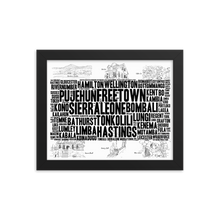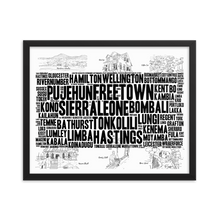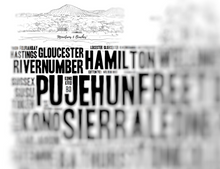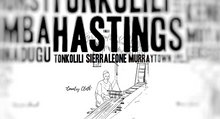
Wall Art featuring elements of Sierra Leonean Identity, including some of its ethnic groups, languages, and names that illustrates Sierra Leonean Heritage.
In earlier times, the area witnessed large migrations of the Limba, Sherbro, Mande, Fulani, and other ancient ethnic groups in West Africa. In 1792, before the Haitian Revolution and Liberia, the first successful settlement of ex-enslaved black Americans in Africa was established in Sierra Leone, with descendants still there today. From 1800 to 1850s, over 500 Jamaican Maroons from the mountains of Jamaica and others from Barbados, Trinidad, and other Caribbean Islands settled in Sierra Leone.
From 1808 to the 1860s, over 60,000 West and Central Africans liberated on slave ships across the Atlantic were resettled in Freetown, Sierra Leone. It isn't uncommon to find a Sierra Leonean today with Yoruba, Fante, Wolof, Igbo, Hausa or Congolese ancestry among others. In the 1840s a German Linguist conducting studies in Sierra Leone, a country with less than 100,000 inhabitants at the time, discovered over 300 words spoken there, taken from over 100 languages across Africa. In the 1940s, an African American Linguist discovered hundreds of Sierra Leonean words and names in the Gullah language of the American South, the oldest African American community.
With the emerging trend of DNA Ancestry in the 21st Century, a large percentage of African Americans have traced their DNA Ancestry to the Temne and Mende of Sierra Leone. Native Sierra Leoneans take great pride in their country's heritage and impact on both sides of the Atlantic. As an African American or West Indian, You never know, you may very well be a Sierra Leonean. "Kushe" is a general welcome greeting used in Sierra Leone and recognizable in other parts of the world. It carries a double meaning as an expression of encouragement for effort and resilience.
• Alder, semi-hardwood frame
• Black .75” thick frame
• Acrylite front protector
• Lightweight
• Hanging hardware included















